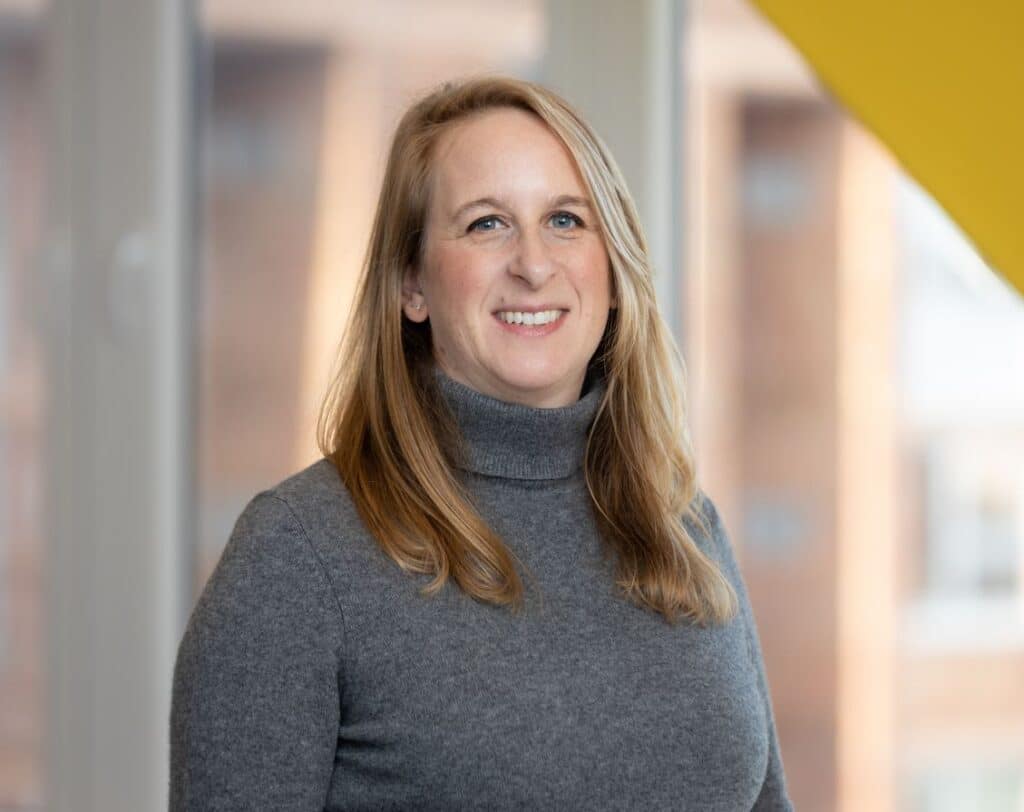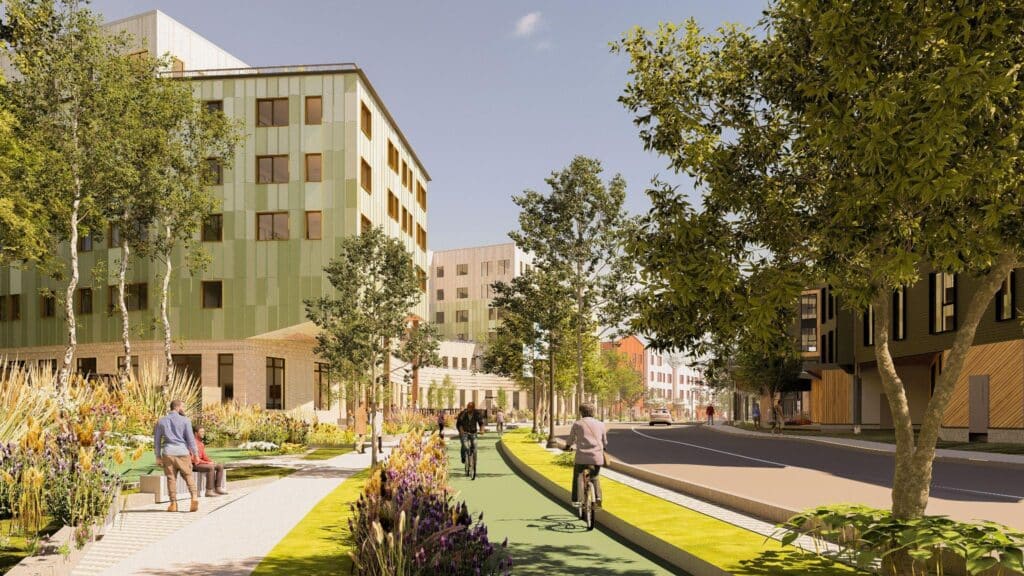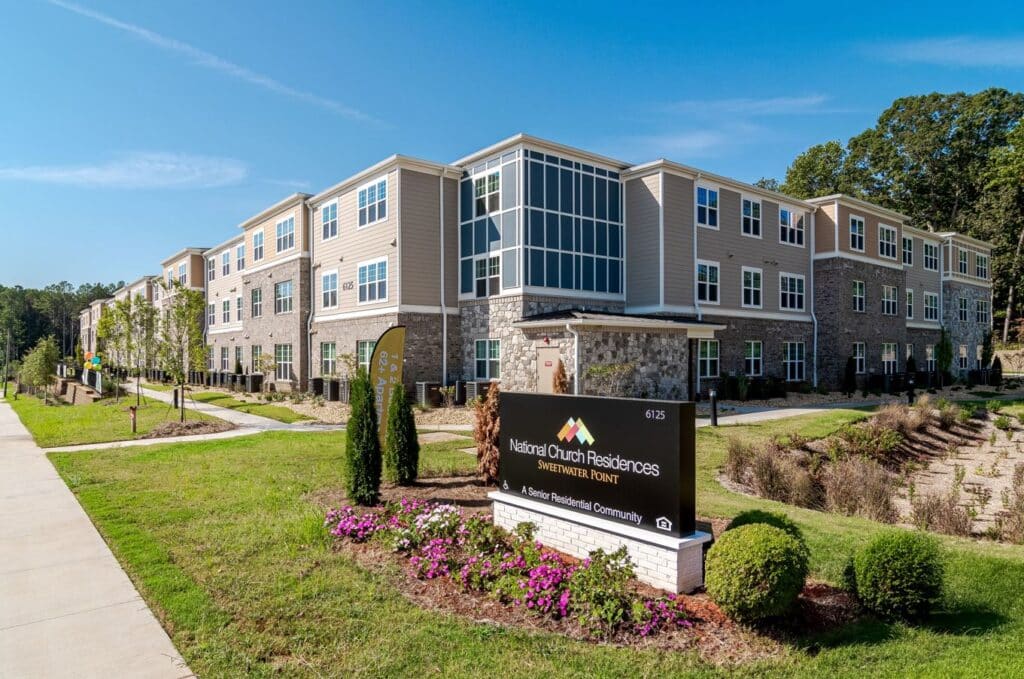Despite Structural Challenges, 202 Program Provides Lifeline to Senior Affordable Housing Industry

By Abram Mamet
9 min read
In the world of affordable housing, few projects are as desperately needed as those targeting extremely low-income seniors, as this vulnerable population continues to grow at a staggering rate. According to the 2020 US Census, the share of elderly Americans has increased nearly every decade since 1920, with just over 15 percent of the entire population today being represented by people 65 and older.
As these individuals exit the workforce, many do not have adequate savings or other income to live in the same communities they have all their lives, and in some cases, to live in adequate housing. According to the U.S. Interagency Council on Homelessness, elderly Americans are the fastest-growing group of individuals threatened by homelessness, with numbers projected to continue to rise through 2030.
For mission-committed developers who have taken up the task of building this subsidized affordable housing for seniors, the Department of Housing and Urban Development’s (HUD) Section 202 program has continued to provide a vital financial boost to new senior housing projects.
Originally introduced in 1959, the Section 202 program operates by supplying both front-end and long-term funding for qualified nonprofit developers to build income-restricted senior housing. Though it continues to operate, today’s Section 202 program looks very different from its initial iteration.
Until 1974, the program mostly targeted moderate-income elderly households, as well as households with disabled adults, by providing low-interest construction loans to nonprofit developers. After 1974, that program shifted to targeting lower-income populations earning 80 percent or below their area median income (AMI) by adding project-based Section 8 rental assistance subsidies to Section 202-supported housing developments.

During this period, the program “was truly hitting that target market of extremely low-income seniors,” says Zoe Weinrobe, chief of real estate at 2Life Communities, a greater Boston-oriented developer of senior housing that has been active in the industry since 1965. Renters “were only paying 30 percent of their income towards rent, and then you were getting the Section 8 vouchers to cover the cost of the operations – including services.”
In 1990, the program once again shifted, replacing the loan program with capital advance grants and replacing Section 8 vouchers with something called project rental assistance contracts (PRAC), a structure that remains today. Distinct from Section 8 vouchers, PRAC instead pays the owner based on budget, meaning that PRAC makes up the difference between rental income and operating expenses. This key difference means that PRAC can only cover basic operating expenses—staff, utilities, taxes and the like—and can’t go towards other critical expenses like debt service.
Over time, funding for the program dwindled, and by 2011, no new funding was approved for the new Section 202 units.
As the decade wore on, the housing gap for cost-burdened seniors only grew as fewer and fewer dedicated units could be built. In FY 2018, after nearly a decade of advocacy, the program was revived, and limited funding was once again made available for new buildings through the Section 202 program. However, Weinrobe stresses that this new contemporary iteration of the program “was basically a mixed-finance program, where you get some capital dollars towards the cost of construction.” No longer was this meant to be a standalone program; now, “it’s meant to be layered with long-term housing funds, including Low Income Housing Tax Credits from your local municipality or state. It’s now just one layer of financing in your larger capital stack, covering maybe ten to 15 percent of the capital stack.”
Worth the Price of Admission
Still, the Section 202/PRAC program remains a “vital” resource, says Matt Rule, senior vice president of Housing Development and Asset Management at National Church Residences. The Ohio-based nonprofit has been developing senior housing since 1961. Rule points out that the LIHTC program “struggles to set aside units and provide housing for folks that are at or below 30 percent AMI. The 202/PRAC program has allowed us to serve seniors at that income level. And that’s pretty impactful.”
Weinrobe concurs, noting that the “overwhelming majority” of demand that 2Life sees amongst senior tenants comes from extremely low-income seniors who can’t afford tax credit rents. “I need vouchers to support those folks. If I’m getting a lot of PRAC vouchers, then those folks are protected. They are in a vouchered unit.”
Additionally, Weinrobe says that Section 202/PRAC funding can help give weight to a project, unlocking the extra funding sources necessary to get the development across the line. For example, she points to 2Life’s Brooke House at Olmsted Village in Boston’s Mattapan neighborhood, a service-enriched affordable senior housing project that integrates a childcare center and a healthcare clinic, which serve the broader community. On track to start construction later this year, the project received a $7.3 million Section 202 capital advance and 30-unit PRAC award, which gave 2Life “leverage to go to the Boston Housing Authority and get another 75 Section 8 vouchers.”

One important source of funding is, unsurprisingly, both State and Federal LIHTCs, the uses of which Rule says haven’t always been allowed under previous iterations of the Section 202 program. He says allowing those resources to combine with Section 202/PRAC funding has been “transformational” by allowing “owners and developers to leverage LIHTC resources to more efficiently produce high-quality affordable senior housing at scale.”
Weinrobe says that 2Life has been particularly successful when going after LIHTC dollars for Section 202 projects in Qualified Census Tracts (QCTs), “not just for the 30 percent basis boost but also for the fact that we can include all of our community program common spaces in the eligible basis as well. Spaces for fitness and wellness activities, arts and culture programs, communal dining programs and community events are critical to 2Life’s supportive housing model.”
In addition, Weinrobe says philanthropic dollars are critical gap fillers to help fund these community program spaces and make these projects a reality. “We couldn’t afford to do these projects without additional philanthropy. We have an amazing fund development department that the real estate team works closely with. And so, we’re going after foundations and large philanthropic institutions to close that remaining financing gap.” There is a real mix of philanthropies, says Weinrobe, from local organizations to national foundations, and from organizations that share a deep history with 2Life to ones that are only interested in a specific project.
Though each funding partner is critical for the success of these deals, each can come with their own compliance and regulatory regime that a developer must adhere to in addition to HUD’s requirements for Section 202 program participation. “Our typical capital stack is ten to 15 sources,” says Weinrobe. “But because HUD still administers the program as if they’re the only funder, it can be challenging to layer the HUD regulatory agreement or use agreements and some of their very stringent requirements with other lenders’ needs in terms of their funding constraints.”
Despite the challenges of using Section 202 for new construction, Weinrobe stresses that the program is still vital. “We do it because this is our mission as an organization. It’s critical for us to try and get as many vouchers—including 202—as we can get for every project.”
Unfortunately, Section 202 is funded on an ad hoc basis, with unpredictable Notice of Funding Availability (NOFA) schedules from HUD. This leaves the program subject to the political climate of the day, leaving future funds uncertain under a Trump administration keen on cutting government spending. Whether this is due to the restriction to nonprofit developers or the fact that senior housing is a less politically salient issue than affordable housing overall, Weinrobe says that a disappearance of Section 202 dollars would be devastating for an industry poised to face a “tsunami” of housing-insecure seniors. “If the 202 program doesn’t have another funding round, I don’t know what we’re going to do.”
Sweetwater Point
One typical example of the impact of Section 202 dollars is Sweetwater Point, a new development from National Church Residences in the Atlanta suburb of Douglasville. The three-story midrise serves seniors aged 62 and over and contains 96 affordable units, 16 of which are PRAC-subsidized.

Sweetwater Point was funded using a highly blended capital stack, including a $2.5 million capital advance from the Section 202 program, a $13 million construction loan from Wells Fargo (tax-exempt bonds were issued by Douglas County Housing Authority), a $7.8 million permanent loan from Bellwether Enterprise Real Estate Capital, four percent federal credits purchased by Enterprise Community Partners and state tax credits purchased by SugarCreek Capital. One unique funding source was an $800,000 subordinate loan from Mercy Capital, a longtime partner of National Church Residences who stepped up to fill final funding gaps, says Rule.
Douglasville, where Sweetwater is located, has seen a population boom since COVID, growing over ten percent between 2020-23, according to the U.S. Census Bureau. “That exacerbated the need for affordable senior housing there,” explains Rule. “Folks were being displaced during COVID from the various Atlanta marketplaces and getting pushed out into the suburbs but were struggling to find affordable options.”
In stepped National Church Residences, whose two-decade-plus history of providing senior housing in Atlanta led to familiarity with the deal and a preemptive sense that such a project would be successful. One of the struggles that National Church Residences have had in Atlanta, Rule says, is to “reach more seniors with new construction products at that extremely low-income level.” Despite a relatively strong State LIHTC program, Rule says, “Owners have struggled to reach residents at the extremely low-income standpoint. So, for us, that’s been a missional push for our organization.”
This all means that the site was particularly attractive, as a deeply affordable senior housing project would immediately meet the community‘s needs. Additionally, the site is close to senior-friendly amenities, with public transit across the street and retail, food and grocery stores nearby.
“So, for us,” says Rule, “it was very attractive to be able to land a senior in a safe area that had been under-housed but had those amenities available.”
Though the Section 202 program provided a relatively modest portion of Sweetwater Point’s initial capital stack, Rule emphasizes that those dollars were the keystone of the entire deal. “There was no way but for that $2.5 million of capital money and the 16 PRAC subsidies for this to happen,” he says. “To see a fairly modest HUD resource utilized to leverage existing programs to bring a community to fruition at scale was pretty cool.”
